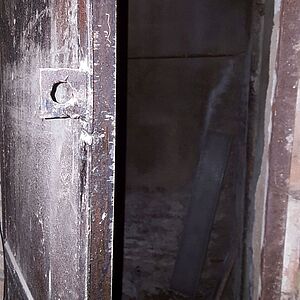Albania
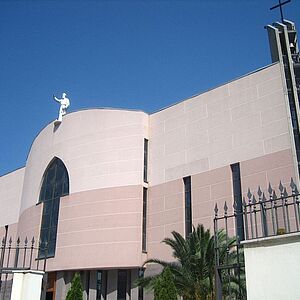
“My first prison was a lavatory”
The Catholic St. Paul's Cathedral in Tirana is just 20 years old. Many older church buildings were destroyed in Albania during the communist dictatorship. Paul the Apostle is said to have founded one of the first Christian communities in Europe here. The Catholic Church was especially targeted for persecution because of its cross-border hierarchical structures. Only a few priests survived Albanian communism. One of them was Father Anton Luli, who was imprisoned for more than 40 years. I had just [...Read more]
![[Translate to Englisch:] The Building with cubes](/fileadmin/_processed_/0/8/csm__The_Building_with_Cubes__bea_56b8013b74.jpg)
"All the artists had become agents"
Overly modern instead of socialist-realist – that was the verdict on this building in Tirana designed by Albanian architect Maks Velo in 1972. A year later he was banished to a village and arrested in 1978. Charged with “agitation and propaganda," he was sentenced by a court to ten years in a prison and forced labor in the Spaç camp. By the time he was released in 1986, the secret police had tried to recruit him six times – without success. He described his persecution in 2019. That world was [...Read more]
Argentina
![[Translate to Englisch:] Centro Popular de la Memoria in Rosario [Translate to Englisch:] Heutige Gedenkstätte Centro Popular de la Memoria war einst die Polizeistation von Rosario](/fileadmin/_processed_/8/6/csm_1200px-Centro_Popular_de_la_Memoria_5_bearb_a7cd34cbaf.jpg)
“Some of the worst hours of my life”
Bright sunlight shines into the former cell of the Rosario police station in the Santa Fe province. An illegal detention center was located here in the late 1970s. Relatives of the victims turned it into a memorial in 2002. Patricia Isasa describes how, in 1976, as an organizer of a student union in Santa Fe, she was abducted by security forces and held in a secret prison for two and a half years. On the day of July 30, 1976, I was only 16 years old. At 12:30 p.m., joined forces of the Argentine [...Read more]
![[Translate to Englisch:] Gefängnis Coronda [Translate to Englisch:] Coronda-Gefängnis, Pavillion 6, im Jahr 2000](/fileadmin/_processed_/0/9/csm_Carcel_de_Coronda_-_Muni1975_-_02_bearb_5890fdcb04.jpg)
“The aim was to destroy us”
The Coronda prison, situated about 400 kilometers north of Buenos Aires, is almost 90 years old. During the military dictatorship, the prison near Santa Fe served as a center for “legal” imprisonment. One of the prisoners was the 22-year-old student Sergio Ferrari. Forty years later, he appeared as a witness in the trial against the prison commanders – a delayed gratification for which he and other prisoners had long fought. During the military rule the prison in Coronda was the only one under the [...Read more]
Cambodia
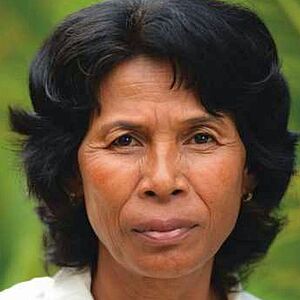
“In the jungle I saw a lot of dead people.”
Hang Nget was 16 years old when she was deported with her family in 1975. She and other teenagers were forced to plant rice and dig irrigation canals for the rice fields. She mostly associates constant hunger with the time of the Red Khmer. Her six-person family received only three cans of rice a day; later the ration was reduced to two. In testimony published by TPO, a non-governmental organization, she describes how her brother was killed for secretly stealing food. "In 1976, darkness fell over [...Read more]
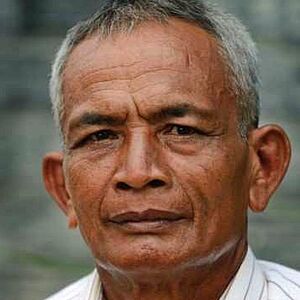
“They only stopped when we lost consciousness”
Kim So was a young monk when the Khmer Rouge invaded Phnom Penh in April 1975. When the deportation of the city’s inhabitants began, he returned to his hometown as a precautionary measure. He had to work in a mobile brigade there. Since he often returned from work very late, the cook would leave food for him. This led to the accusation that the 22-year-old was having an affair with her – a serious offense for the Khmer Rouge. In an interview he tells us how he felt when this happened. The DC-CAM [...Read more]
Chile
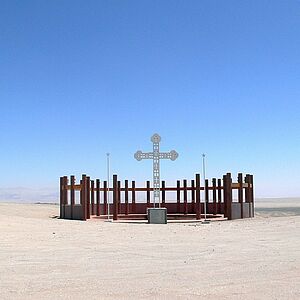
“The fear from then is still in me”
The silver cross stands alone on the road leading to the Calama airport. Here, in the dry desert earth, the bodies of 26 men executed by the Chilean military on October 19, 1973, were buried. When their families learned of this, the human remains disappeared. In a report published by the Amnesty International human rights organization, a victim’s sister describes her brother’s arrest. I am the eldest daughter of a typical Chilean family. I was 13 years-old when José Gregorio – fourth child and [...Read more]

“Sometimes I thought I was going to die”
A mural in the José Domingo Cañas Memorial in Santiago de Chile documents the torture carried out during the military dictatorship. The Chilean secret police DINA ran one of its own interrogation centers here. The prisoners were brutally beaten, nearly suffocated with plastic bags or abused with electrical shocks. One victim, who was held in barracks in Valdivia in 1984, described to the Commission on Political Imprisonment what he experienced there. “One of the agents was veiled and in a [...Read more]
Ethiopia
![Door of a Cell [Translate to Englisch:] Zellentür](/fileadmin/_processed_/0/1/csm_1280px-Addis_Ababa_2014_11__15731371026__e44706ddbe.jpg)
“Torture was a daily experience”
The Ethiopian documentation and research center collects documents and survivor testimony about the time of the Red Terror. The following report was compiled from an interview with a former prisoner. "I am a survivor of the Red Terror, now aged 55. In 1978, at the age of 21, I was imprisoned for five years. I had been accused of being an Ethiopian People’s Revolutionary Party (EPRP) member and was arrested after my friend and comrade betrayed me, which was typical of politics at that time. First, [...Read more]
![Showcase cabinet with skull [Translate to Englisch:] Vitrinenschrank mit Schädel](/fileadmin/_processed_/0/1/csm_Red_Terror_Martyrs__Memorial_Museum_in_Addis_Abeba_bearb_335a56702a.jpg)
“I am still traumatized”
The English website of the human rights memorial project of the African Union (AU) has recorded several survivors’ testimonies on their persecution during the Red Terror. One victim, who according to the organization asked for his testimony to remain anonymous, describes his arrest in 1978. "I was only 20 years old in August 1978 when the Ethiopian security agents of the Dergue regime accused me of engaging in subversive activities and sent me to prison. I was one of the lucky few political [...Read more]
Georgien
Germany
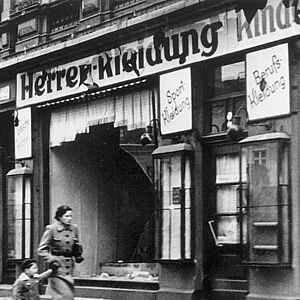
“The jeering crowd stood below”
On the night of November 9, the Nazi regime organized violent attacks on Jews and their property throughout Germany – like at this clothing store in Magdeburg (photo). At least 400 Jews were murdered or driven to suicide. Thousands of stores, apartments, cemeteries and synagogues were damaged or destroyed. About 30,000 Jews were subsequently sent to concentration camps. The writer, translator and librarian Josepha von Koskull witnessed the pogroms in Berlin. “Close to the bank where I worked was [...Read more]
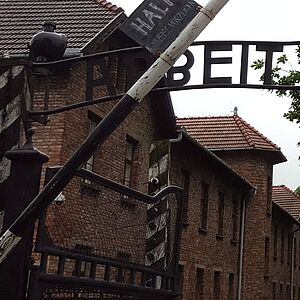
“I also had to go to Dr. Mengele”
“Arbeit macht frei” (“work makes you free”) – the Nazi’s cynical slogan still stands at the entrance to the former Auschwitz I concentration camp. Heinrich Himmler had the camp built in occupied Poland in 1940 and expanded into a huge camp complex. Approximately 1.1 million people were murdered here, including nearly 20,000 Roma and Sinti. The 92-year-old Philomena Franz describes how she arrived at the concentration camp’s so-called gypsy camp in April 1943. “In the examination room one of the SS [...Read more]
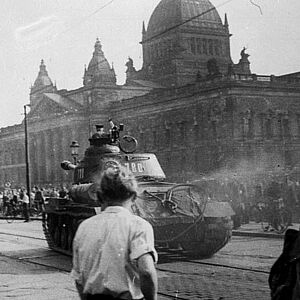
“The masses made them strong and brave”
A Soviet tank rattles through the Leipzig city center. The photo shows how Red Army units crushed the GDR uprising on June 17, 1953. A demonstration by East Berlin construction workers had triggered widespread unrest. Thousands of workers went on strike, protesting the policies of the communist regime. The teacher Wilhelm Fiebelkorn remembers the beginning and end of the uprising in the industrial city of Bitterfeld. “But then, at about 9:30, a black wall moved forward over the railroad overpass [...Read more]
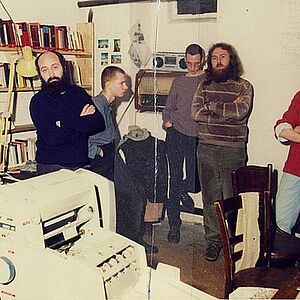
"Open the window! Printing presses are coming!"
With their arms crossed in front of their chests or their hands in their pockets, five GDR opposition activists show their silent protest as they are photographed during a raid by East German secret police. In November 1987, they were printing an underground magazine when they were surprised by the Stasi. They were arrested, but released a little later following widespread protests. The printing press had been smuggled to East Berlin by a politician from the West German Green Party. In an interview, [...Read more]
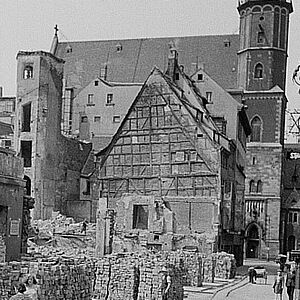
“The burning curtains flapping in the bedroom”
Like most German cities, Leipzig was severely destroyed during World War II by bomb attacks from the United States and Great Britain. Four years after the war, bricks from destroyed houses were still piled up in front of the St. Thomas Church, the famous workplace of Johann Sebastian Bach (photo). About 6,000 people died in the bombing. Elke Rau, a vocational school teacher describes her experience as a child during the heaviest air raid on the city. “I was five years old in December 1943 and can [...Read more]
Peru
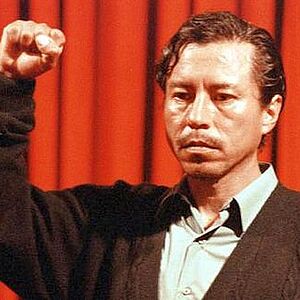
“War dehumanizes us”
With a raised fist, Óscar Ramírez Durán, the former head of the guerrilla organization "Shining Path," looks into the television cameras in 1999. A court of the Fujimori regime had just sentenced him to life imprisonment. Four years later, the staff of the Truth Commission visited him in prison and asked him to explain his view of the armed conflict. In a video, he distanced himself from the violence. Is it alright to offer murderers a public forum? The decision of the Peruvian Truth Commission to [...Read more]
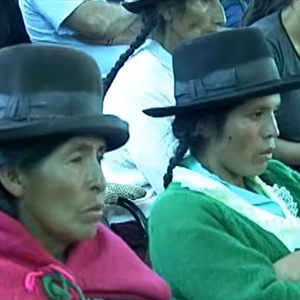
“They had shot them in their heads”
The Indio women listen with petrified faces as Víctor Huaraca Cule tells the Peruvian Truth Commission how he was attacked by a commando of the "Shining Path" in 1983. At the age of 23, the Ayacucha-born national police officer lost his left leg and three toes on his right foot. It was a miracle that he survived. He described his experiences to the Commission in April 2002. "We had a bridge checkpoint. (...) Around six o'clock in the afternoon (...) we were attacked by about fifty ... sixty [...Read more]
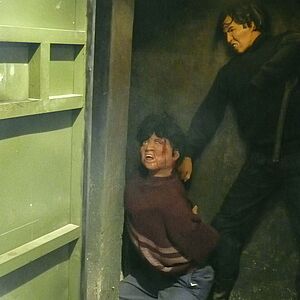
“I went to the morgue every day”
A young man is tortured in a cell. The reconstruction in the Museum of Memory in Ayacucho demonstrates how the Peruvian military tortured and often killed detainees. In 2002, the father of one of the victims, a police officer, told the Truth Commission how his son suddenly disappeared on his way home from university in Huancayo. The 20-year-old was released after being severely tortured, but he had to leave the country. "It happened on August 25, 1992, when Miguel Ángel Cieza Galván was arrested by [...Read more]
Russia
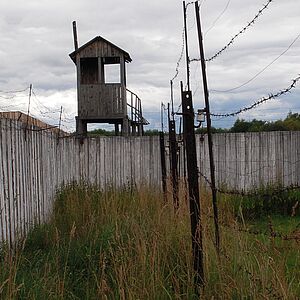
"What I Saw and Learned in the Kolyma Camps"
Watchtowers, palisades, barbed wire – that is how most Soviet labor camps looked. The only largely preserved camp is located near Perm. The “Gulag Archipelago” became famous primarily through the book of the same title written by Alexander Solzhenitsyn, who spent eight years of his life in various labor camps. Many other authors have also described the terror of the Stalinist era. The best known among them are Anna Akhmatova, Osip Mandelstam and Varlam Sharlamov, none of whom lived to see the end of [...Read more]
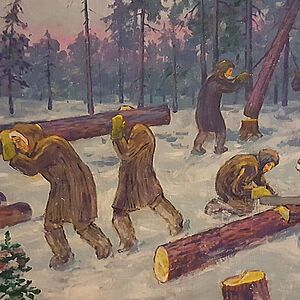
"Our daily rations depended on the amount of work accomplished”
The Gulag prisoners were forced to do hard physical labor in freezing temperatures. This wood cutting scene was captured by the painter Adam Schmidt, who was also imprisoned in a camp. The Jewish-Polish jurist Dr. Jerzy Gliksman described how the system of forced labor was organized in the Soviet Union in the late 1940s. His report for a United Nations Commission of Inquiry is one of the first eyewitness reports on the Gulag. In spite of the fact that the work was beyond the limits of our [...Read more]
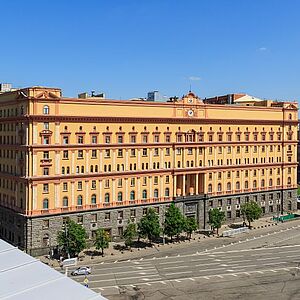
“The indictment was totally extreme”
The Russian domestic intelligence agency FSB resides in this building in Moscow. It has served as the headquarters of the Soviet secret police since 1920. In the basement of the “Lubyanka,” as the building is called, hundreds of thousands of prisoners were interrogated and tortured and thousands were shot. The 17-year-old schoolgirl Susanna Petschuro was one of the people imprisoned there. She was sentenced to 25 years in a labor camp in 1951 for her participation in a circle of critical students. [...Read more]
Rwanda
![Altar room in the Ntarama Church, 2006 [Translate to Englisch:] Altarraum der Ntarama-Kirche mit menschlichen Knochen im Jahr 2006](/fileadmin/_processed_/7/2/csm_1280px-Ntrama_Church_Altar_5d1981f70e.jpg)
“They killed with all their might”
Human bones, children’s shoes, combs, scarves and other objects still lay under the benches in front of the alter of the Church of Ntarama. Francine Niyitegeka, at the time a 25-year-old shopkeeper and farmer, survived the carnage. He describes how even his neighbors took part in the killing. “The interahamwe began hunting down Tutsis on our hill on the 10th of April. The same day, we upped and left in a group, planning to stay in the church in Ntarama because they had never been known to kill [...Read more]
![Sign at the entrance to the Ntarama Memorial [Translate to Englisch:] Eingangsschild der Kirche und Gedenkstätte Ntarama mit Angabe der Opferzahlen (5000)](/fileadmin/_processed_/2/e/csm_1280px-Ntarama_Church_Genocide_Memorial_-_Flickr_-_Dave_Proffer__11__bearb_1cde21ca8b.jpg)
“We were almost paralyzed”
Janvier Munyaneza is one of the few survivors of the massacre in the Ntarama Church. The 14-year-old shepherd hid between the dead bodies of the people who had been killed and pretended to be dead. On the website of Rwandan Stories, he describes how the Hutu militia "Interahamwe" took action against the refugees in the church. "The interahamwe prowled about the small wood around the church for three or four days. One morning, they all came in a group together, behind soldiers and local policemen. [...Read more]
![Sign showing the way to the Nyamata Church [Translate to Englisch:] Wegweiser zur Nyamata-Gedenkstätte](/fileadmin/_processed_/6/4/csm_Genocide_Memorial_Sign_with_Passing_Traffic_-_Nyamata_-_Rwanda_30444887b0.jpg)
“We killed in teams”
Nyamata is the name of the genocide memorial in the south of Kigali where the human remains of some 50,000 people lay buried. The mass murder, which was mostly carried out with machetes and clubs, is hard to comprehend. This is why the French journalist Jean Hatzfeld questioned not only victims but also perpetrators and published the interviews in several books (see literature). Excerpts are presented on the website rwandanstories.org. In one of them a Hutu describes how the killing became [...Read more]
South Africa
![[Translate to Englisch:] Crossroads](/fileadmin/_processed_/b/0/csm_2011-02-08_16-53-17_South_Africa_-_Crossroads_bearb_ebcca86304.jpg)
“The dogs ran after us and bit us”
This densely populated district on the outskirts of Cape Town is called “Crossroads.” The name goes back to the road junction here where workers from a nearby farm built their dwellings in the early 1970s. By 1977, about 18,000 people had settled in the area; today the population has more than doubled. Because the area was not intended for Blacks, police used to chase away the residents regularly. Beauty Skefile, who lived there for years in a canvas shack, shares her memories. We had to hide the [...Read more]
![[Translate to Englisch:] Necklacing](/fileadmin/_processed_/b/5/csm_2007111100_necklacing_execution52_aafedd5bf8.jpg)
“I realised that her foot had been burnt”
“Necklacing” refers to a particularly cruel form of lynching in South Africa. A car tire soaked in petrol is placed around the victim’s neck and set on fire. The process was first filmed on July 20, 1985 in a township near Johannesburg. At that time, a mob of anti-apartheid activists killed 24-year-old Maki Skosana, who was believed to be an informant. The pictures became a symbol of the violence in the struggle against apartheid. In 1997, her sister Evelina Moloko reported the murder to the Truth [...Read more]
Taiwan
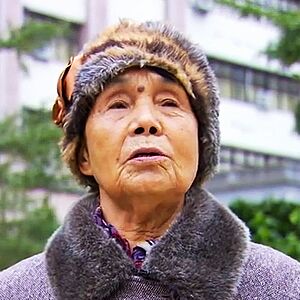
“I will never forgive them”
The gymnast Chang Chang-Mei was 18 years old when she was arrested in her school in Taichung in April 1950. She was accused of belonging to an “insurgent organization.” She was not released until July 1962 – after spending twelve years and 100 days in incarceration. The Human Rights Museum accompanied Chang Chang-Mei to the sites of her persecution and documented her fate in an oral history documentary. In it she describes her imprisonment and the sounds of torture she heard at night. Click here [...Read more]
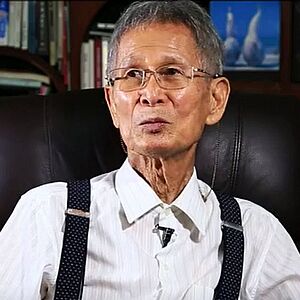
“I had no idea what my crime was”
Chang Ta-Pang was arrested in Tainan, Taiwan on August 16, 1950, two days after his 21st birthday. The secret police accused him of supporting a seditionist organization. In March 1951, a court sentenced him to ten years in prison, which he served up to the very last day. In an oral history documentary from the National Human Rights Museum, he describes how he learned about his sentence. Click here for the documentary video on Chang Ta-Pang (Chinese with English subtitles).
Tunisia
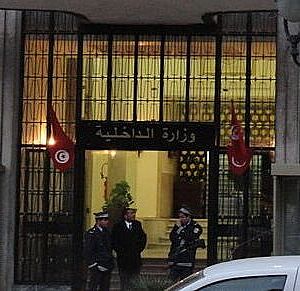
“They squeezed my testicles until I fainted”
The uniformed men stand around bored at the wide-open entrance to the Tunisian Ministry of the Interior. It is hard to imagine that people were brutally tortured behind these walls for decades. One of the victims was the then 25-year-old Zied Ben Jemaa. He was arrested in April 2005 and sentenced a year-and-a-half later by the criminal court in Tunis to twelve years in prison. In a French documentary, the active soccer player recalls the abuse he endured. “I was arrested at home on April 18, 2005 [...Read more]
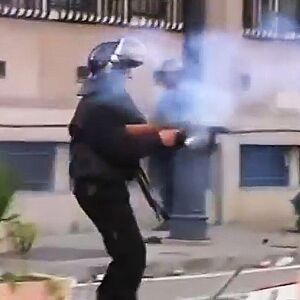
“They force you to confess imaginary things”
Security forces take action against demonstrators in front of the Tunisian Ministry of the Interior in January 2011. Four years earlier, Béchir Mesbahi had been severely tortured in the building. At the age of 19, he was arrested in the city of Sousse and taken to Tunis. In the Ministry of the Interior he was forced to sit on a chair in a corridor for 32 days. In a French documentary he describes how he was tortured there. “Before my arrest I had a traffic accident in which I suffered a head [...Read more]
Ukraine
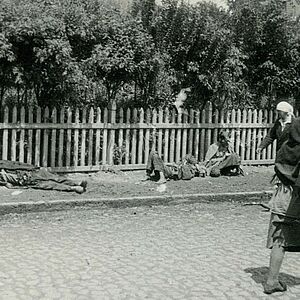
“Everyone just expects death”
Starving people lying on a sidewalk in Kharkiv. This photo and about 100 others were smuggled abroad by the Austrian chemical engineer Alexander Wienerberger in 1933. They represent some of the few images of the famine in Ukraine. Around the same time, Maria Zuk was allowed to leave the Soviet Union to join her husband in Canada. The farmer from an area near Odessa gave an interview to a Ukrainian émigré newspaper in Winnipeg. It is one of the earliest accounts of the Holodomor. Q: When did you [...Read more]
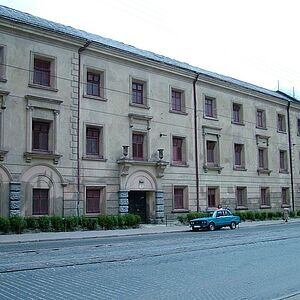
“There were four rows of corpses of murdered prisoners”
Brygidki Prison in Lviv: In 1941, the former convent became the scene of a mass murder. After the Red Army invaded eastern Poland in 1939, the Soviet secret police took over the baroque cell block. Two years later, they murdered some 7,000 prisoners here and in two other prisons in the city before fleeing the Wehrmacht. Executions continued to take place here later. A report by a survivor of the Soviet massacre appeared in a Ukrainian exile newspaper in 1960. "On the Sunday [29th june 1941], I [...Read more]
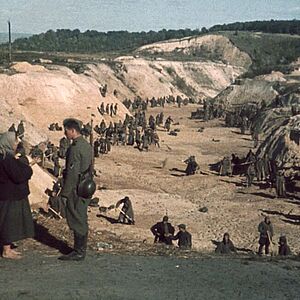
“We went to our certain death”
This scene, captured by photographer Johannes Hähle on the edge of the Babi Yar ravine near Kiev in 1941, seems almost peaceful. In reality, prisoners are in the process of removing traces of one of the largest mass executions by the German occupation forces in Ukraine. More than 30,000 Jewish residents of Kiev were shot here on September 29-30, 1941. The 15-year-old Ruwim Schtein survived the massacre. Following the collapse of the Soviet Union, Ukrainian historian Boris Zabarko interviewed him and [...Read more]
